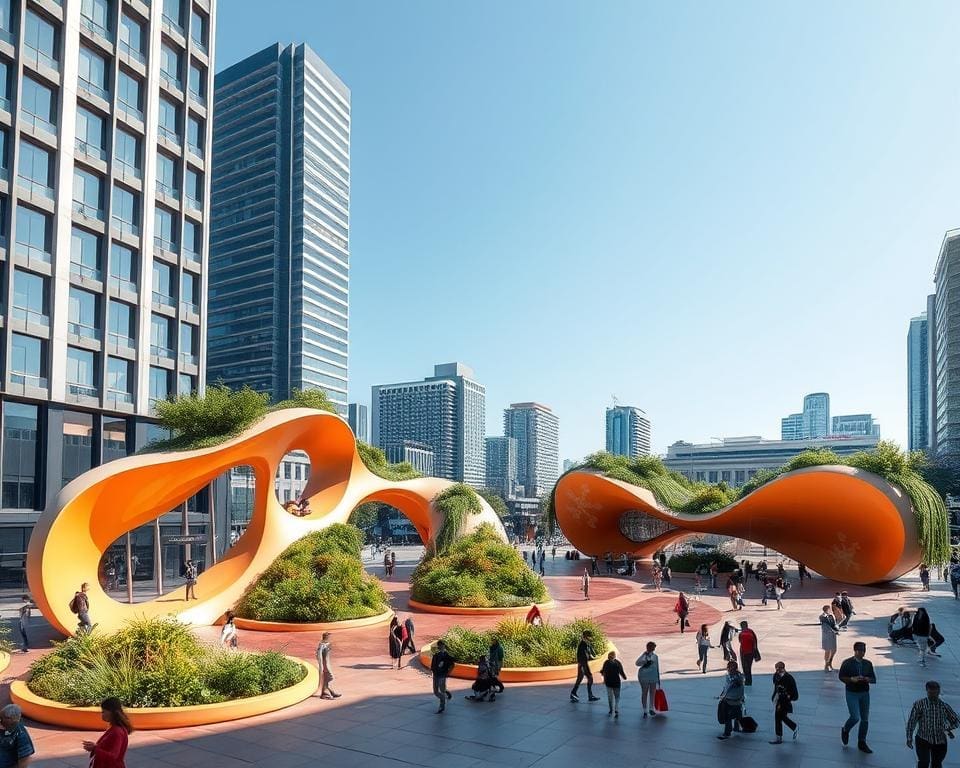Asif Khan stands at the forefront of contemporary architecture as an experimental architect dedicated to transforming public spaces. His visionary approach blends creativity with practicality, fostering environments that encourage social interaction and community engagement. Through architectural innovation, Khan has reshaped the perception of urban design, making spaces not just functional but truly inspirational. His projects and exhibitions reflect a deep commitment to revitalising urban settings, ultimately enriching the lives of their inhabitants.
Introduction to Asif Khan and His Vision
Asif Khan stands out as an Experimental Architect, renowned for his innovative approach to urban design. His Architectural Vision centres on the interplay between public spaces and the communities that inhabit them. Rather than merely focusing on aesthetics, Khan fosters the vital relationship between architecture and emotional connection, asserting that spaces should not only function but inspire and resonate with their users.
Khan’s works reflect a commitment to Urban Transformation, prioritising the creation of environments that promote interaction and inclusiveness. He believes that well-designed public spaces can significantly enhance social cohesion and enrich urban experiences. By considering both environmental sustainability and cultural context, Asif Khan paves the way for a new era in architecture where functionality meets profound meaning.

The Role of an Experimental Architect in Urban Design
An Experimental Architect plays a pivotal role in reshaping the fabric of urban landscapes. This profession transcends traditional architectural boundaries, focusing on Architectural Innovation that addresses the needs and aspirations of communities. An experimental architect, such as Asif Khan, elevates the design process by accommodating user-centric approaches and sustainable methodologies.
Key responsibilities encompass the following:
- Employing innovative materials and techniques that not only enhance aesthetics but also promote environmental sustainability.
- Engaging with local communities to incorporate their input, ensuring that designs resonate with the users’ lifestyles.
- Creating dynamic public spaces that encourage interaction and foster social cohesion among diverse groups.
Asif Khan’s approach exemplifies the impact of community engagement within urban design. His projects often serve as not just architectural entities but as vibrant communal hubs, seamlessly integrating functionality with artistic expression. Recognising the importance of evolving urban contexts, he crafts spaces that adapt to changing social dynamics, thereby enriching the urban experience for all.
Asif Khan: Experimental Architect Transforming Public Spaces
Asif Khan’s work represents a fusion of creativity and functionality within the realm of Innovative Landscape Architecture. His ambitious vision redefines urban environments, creating spaces that not only serve practical purposes but also engage the community. Through his transformative projects, Khan inspires a new understanding of how landscapes interact with urban design.
Innovative Approaches to Landscape Architecture
Khan’s innovative approach emphasises the synergy between nature and urban settings, crafting experiences that resonate with users. By integrating organic elements into his designs, he creates immersive environments that invite exploration and interaction. His work leverages state-of-the-art technologies to enhance aesthetic appeal while maintaining ecological mindfulness, a hallmark of Innovative Landscape Architecture.
Case Studies of Transformative Projects
Examining notable projects provides insight into Khan’s design philosophy. The ‘Hive’ installation at the UK Pavilion during Expo 2015 exemplifies his talent for merging art and architecture with community interaction. This installation captivated visitors through its innovative use of light and sound, effectively transforming the space into a dynamic experience.
Another example, the ‘Wintergarden’, serves as a testament to his capability of reimagining public spaces. This project focuses on enhancing community connectivity, utilising natural light and greenery to create a welcoming atmosphere. Similarly, ‘The Serpentine Pavilion’ reflects Khan’s commitment to redefining aesthetic values and functionality within urban design.
Community Engagement in Asif Khan’s Designs
Asif Khan places a strong emphasis on community engagement within his design philosophy. This approach highlights the importance of involving local residents and stakeholders in shaping their own environments. Participatory design workshops play a critical role in this process, providing platforms for individuals to voice their opinions and share their ideas about public spaces.
Through these workshops, Asif Khan harnesses the collective creativity of communities, fostering urban interaction that leads to innovative solutions tailored to specific needs. Residents often feel a sense of ownership in projects they helped to shape, which enhances their connection to the resulting spaces.
The implementation of public consultations further enriches the design process. These sessions promote dialogue between Khan and various stakeholders, ensuring that diverse perspectives are integrated into his projects. By actively listening to community feedback, Khan creates more relevant and functional public spaces, reflecting the desires and aspirations of the people who will utilise them.
- Workshops encourage collaboration among community members.
- Public consultations facilitate open communication with stakeholders.
- Projects reflect the unique character and needs of local populations.
This holistic approach to community engagement not only enriches the design process but also cultivates vibrant, sustainable urban environments that resonate with the aspirations of their inhabitants.
Architectural Innovation and Site-specific Installations
Asif Khan exemplifies a commitment to architectural innovation, crafting site-specific installations that deeply engage with their environments. This approach challenges conventional design methods, inviting users and communities to experience public spaces in new ways.
Materiality and Sustainability Considerations
Khan pays meticulous attention to materiality, employing sustainable resources that harmonise with local ecosystems. His design philosophy encompasses the use of environmentally friendly materials, fostering a dialogue between architecture and environmental stewardship. This commitment to sustainability ensures that the structures not only resonate with their surroundings but also contribute positively to the ecological balance.
Interactivity and Public Participation
The concept of interactivity is integral to Khan’s installations, promoting public participation in the creation and utilisation of spaces. By designing structures that invite engagement, he transforms passive observers into active participants. This collaborative experience enriches the community’s connection to the architecture, turning public spaces into dynamic environments that adapt to the needs and desires of the people who inhabit them.
The Impact of Asif Khan on Urban Environments
Asif Khan’s contribution extends far beyond mere aesthetics; his work leaves a profound impact on urban environments that reshapes community dynamics. The innovative designs invite social interaction, foster cultural exchange, and create vibrant community spaces that encourage public engagement. By prioritising inclusivity, Khan’s projects serve as catalysts for change, making previously overlooked areas more functional and appealing.
The architectural influence of Khan’s work is evident in how it revitalises neighbourhoods. His projects transform forgotten sites into bustling urban hubs. The emphasis on the experience of place enhances local identity, bringing life back to spaces often deemed unwelcoming or utilitarian.
Metrics of success in Khan’s designs highlight the increase in public usage and community cohesion. The reimagined spaces not only attract foot traffic but also inspire a sense of ownership among residents. People gather, connect, and celebrate within these newly formed areas, showcasing the essential role of design in shaping social fabric.
Ultimately, the impact of Asif Khan demonstrates how thoughtful design can transform urban environments into vibrant, inclusive spaces. These architectural innovations aim not just to beautify, but to enrich the daily lives of those who inhabit and interact with these environments.
Future Trends in Public Space Design
The evolution of public space design is being profoundly influenced by the innovative approaches of architects like Asif Khan. As urban environments grapple with challenges such as climate change and population growth, the emergence of Future Trends in Public Space Design has become vital. Increasingly, urban innovation focuses on blending technological advancements with sustainability, ensuring that public spaces are not only functional but also serve as green havens for communities.
As cities move towards fostering inclusivity, the role of public spaces is expanding. The designs now prioritise accessibility for all individuals, regardless of their background or physical abilities. Inclusion, combined with smart technologies, showcases how urban design can adapt to diverse needs, reflecting a society that values every voice. Asif Khan’s work exemplifies this shift towards participatory design methods, encouraging communities to take part in shaping their environments.
Looking ahead, the future of public space design underlines the necessity for adaptable, resilient, and engaging urban landscapes. As architects and planners learn from pioneers like Khan, there lies an exciting potential to create spaces that not only accommodate contemporary urban life but also anticipate future demands. With an unwavering focus on collaboration and sustainability, the path forward in public space design promises to foster environments that nurture both people and the planet.









